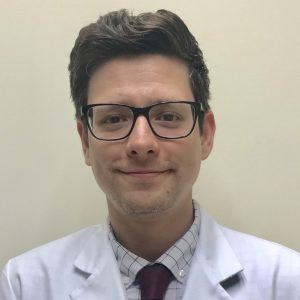Podcast: Download (Duration: 1:13:32 — 68.1MB)
En este episodio hablamos sobre trasplante haploidéntico ambulatorio nos acompañan la Dra.Perla Colunga y el Dr.Guillermo Ruiz Argüelles.

Chronic graft versus host disease (cGVHD) is the major factor limiting quality of life for allogeneic transplant recipients who have been cured of their disease. While post-transplant cyclophosphamide (PTCy) has allowed crossing the HLA barrier in haploidentical transplantation (Haplo) with acceptable toxicity and affordable cost, GVHD remains an important issue. The use of peripheral blood (PB) is associated to higher rates of both acute and chronic GVHD in matched and unrelated donors, while some retrospective Haplo studies have shown this difference as well, with the advantage of an earlier engraftment and less relapse rates resulting in a similar survival. While a prospective phase III trial has not been undertaken, the use of peripheral blood is now common especially in diseases with a high relapse risk.1
Rabbit ATG (ATLG-Fresenius and Thymoglobulin) has proven to significantly lower GVHD rates – particularly its chronic form – in multiple phase 3 trials, without an impact in survival, transplant related mortality, infection or relapse rates in the context of unrelated and matched sibling donors, mostly using myeloablative conditioning. While there are no perfect ATG dosing strategies, reduced doses as low as 2.5 mg/kg can preserve the anti-GVHD effect with fewer complications. The reality is much more complex, as a weight-based dosing rationale for ATG is lacking. (as in other biologics) and can expose patients to higher or lower doses missing the “sweet spot”; recent information on peripheral blood lymphocyte counts as better predictors of ATG dose-response effects has emerged and may change the way this product is prescribed in the near future.2
While rabbit ATG is a big part of the backbone of the Chinese approach to Haplo transplantation, and this approach has been previously used by the Baltimore group in children with sickle cell disease, it is not used in the “traditional” PT-Cy platform for malignancies.3 Therefore, we read with great interest recent work by Arjun Datt Law and Maria Queralt Salas and colleagues from the Princess Margaret Cancer Centre in Toronto, Canada, published last month in Biology of Blood and Marrow Transplantation. In the study, 50 haploidentical transplantation adult recipients for several malignancies undergoing reduced intensity conditioning using fludarabine, busulfan, low-dose TBI and rabbit ATG-T 4.5 mg/kg total dose (0.5 mg/kg day -3, 2 mg/kg days -2,-1) with PTCy and cyclosporine as GVHD prophylaxis in a median follow-up of 168 days reported standard platelet and neutrophil median time-to engraftment (17 and 22 days, respectively), 8% primary failure rate, and an encouraging day +100 cumulative incidence of grade 2-4 aGVHD of 20.3% and cGVHD at 6 months of 15.5%, none severe. Notable adverse effects were a low cytokine release syndrome incidence of 6% and high viral reactivations; CMV occurred in 74% of patients, EBV in 64% and 8% developed PTLD. Overall and relapse free survival, and non-relapse mortality rates were acceptable.
These results are promising, showing low GVHD rates with the caveat of frequent viral reactivations which resolved with pre-emptive anti-viral treatment, which is difficult to replicate where access to antivirals/pre-emptive PCR is not ideal.4
Of note, a similar study from Taiwan compared ATG 4.5 mg/kg plus PTCy (n=37) vs sirolimus (n=24) instead of cyclosporine, reported much higher rates of CRS (83.3%) in the ATG group, noting 51% CMV reactivation, with similar outcomes to the Princess Margaret study in both ATG and sirolimus groups.5 Researchers from King Faisal Specialist Hospital & Research Centre in Saudi Arabia have also used this approach in a prospective phase II study in 27 patients using even less ATG 2 and 3 mg/kg with similar results using the latter dose. While these results have not yet been published in full form they are available in the 2016 ASH proceedings and updated in EHA 2018 (available in EHA Learning Centre).6,7
In conclusion while haploidentical transplantation with PTCy has increased transplant availability throughout the world and is affordable results remain far from perfect. ATG reductions down to 3 mg/kg or lymphocyte-count adjusted doses could improve on these results reducing common viral reactivations while preserving the anti-GVHD effect, particularly for patients with a low risk of disease relapse.

Podcast: Download (Duration: 1:13:32 — 68.1MB)
En este episodio hablamos sobre trasplante haploidéntico ambulatorio nos acompañan la Dra.Perla Colunga y el Dr.Guillermo Ruiz Argüelles.
Mantle cell lymphoma (MCL) is a B-cell malignancy with an inferior prognosis in comparison to other lymphomas. Most patients present …
Around 80% of children with ITP are disease-free within 1 year; a watch and wait strategy is considered standard for …